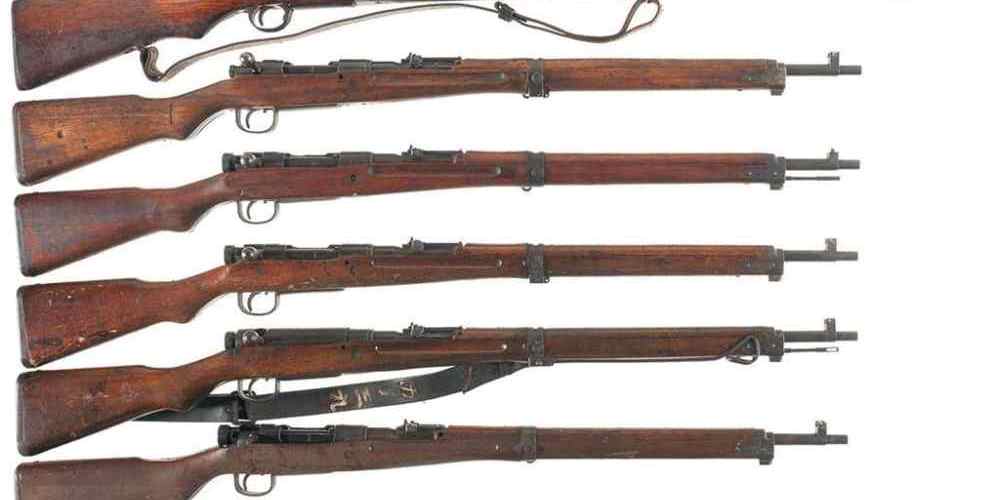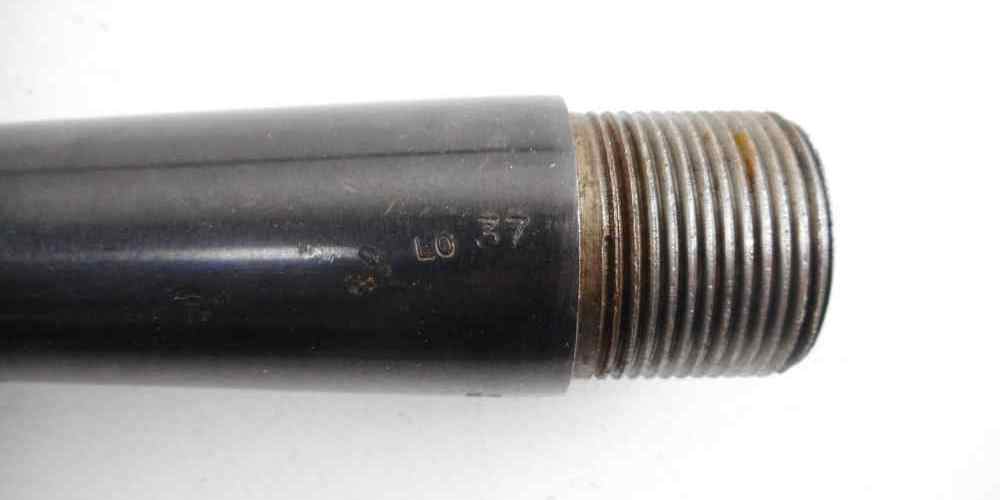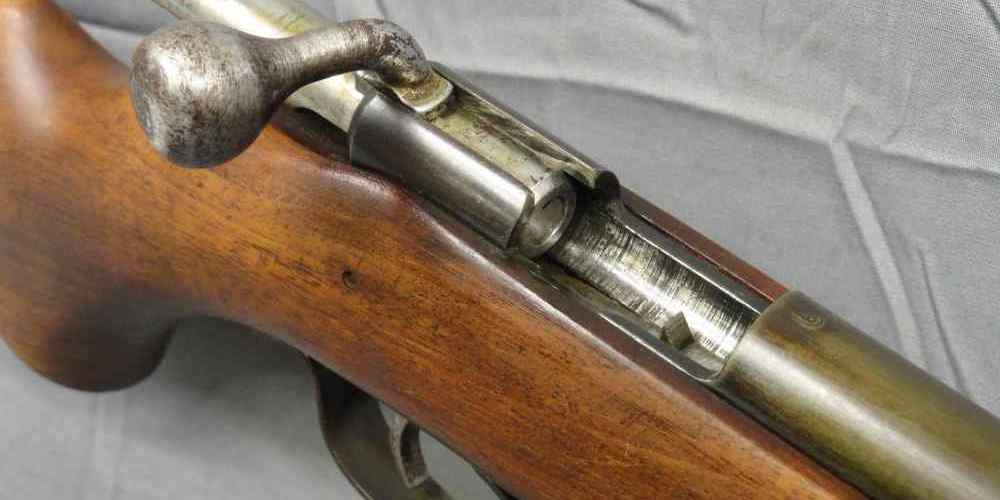“Gas Blocks and Tubes: Precision Engineered for Flawless Firearm Performance”
Understanding the Role of Gas Blocks and Tubes in Rifle Performance
Gas Blocks and Tubes: The Lifeline of Your Semi-Automatic Rifle
In the world of semi-automatic rifles, the seamless operation of the gas system is paramount to ensuring reliable performance. This system, which consists of the gas block and gas tube, is the lifeline of your firearm, playing a critical role in its functionality. Understanding how these components work together to harness the energy from the fired cartridge can provide valuable insight into the inner workings of your rifle and help you maintain it effectively.
When a round is fired, the bullet travels down the barrel, and a portion of the high-pressure gases produced by the burning gunpowder is diverted through a small hole in the barrel known as the gas port. This is where the gas block comes into play. Positioned over the gas port, the gas block acts as a gateway, controlling the flow of these gases into the gas tube. The precision with which the gas block performs this task is crucial, as it must allow just the right amount of gas to cycle the action without over-pressurizing the system, which could lead to increased wear and tear or even damage to the rifle.
The gas tube, a slender pipeline, is the conduit that channels the hot gases from the gas block back towards the receiver. This journey is essential for the semi-automatic action to function. As the gases travel through the tube, they enter the bolt carrier group and create the necessary pressure to cycle the action. This pressure pushes the bolt carrier rearward, ejecting the spent cartridge case, resetting the hammer, and compressing the recoil spring. As the bolt carrier moves forward again, it strips a new round from the magazine and chambers it, readying the rifle for the next shot.
The harmony between the gas block and tube is a delicate balance. If the gas block is too restrictive, the rifle may fail to cycle properly, resulting in malfunctions such as short-stroking, where the bolt does not travel back far enough to eject the spent casing and load a new round. Conversely, if too much gas is allowed through, the rifle can cycle too quickly and harshly, causing excessive wear on components and potentially reducing accuracy due to increased recoil.
For optimal performance, the gas block must be properly aligned with the gas port, and the gas tube must be free of obstructions and correctly installed. This ensures that the gas flows smoothly and consistently with each shot. Additionally, the size of the gas port and the length of the gas system play a significant role in the rifle’s operation. Rifle, mid-length, and carbine gas systems offer different timing and pressures, with each configuration catering to specific barrel lengths and shooting applications.
Regular maintenance of the gas system is also essential for preserving the longevity and reliability of your semi-automatic rifle. Keeping the gas block and tube clean from carbon buildup will prevent malfunctions and ensure that the system operates as intended. Aftermarket upgrades, such as adjustable gas blocks, can provide shooters with the ability to fine-tune the gas system for use with suppressors or various ammunition types, further enhancing the rifle’s versatility.
In conclusion, the gas block and tube are more than just components; they are the heart of the semi-automatic rifle’s operation. Their performance dictates the rifle’s reliability, accuracy, and overall shooting experience. By understanding their role and ensuring they are well-maintained and correctly configured, shooters can enjoy the full potential of their firearms, whether at the range or in the field. Remember, the lifeline of your semi-automatic rifle depends on the harmonious function of the gas block and tube, so give them the attention they deserve.

How to Choose the Right Gas Block and Tube for Your Rifle Build
Gas Blocks and Tubes: The Lifeline of Your Semi-Automatic Rifle
When assembling or upgrading a semi-automatic rifle, the gas block and tube might not be the most glamorous components, but they are undoubtedly among the most critical. These parts work in tandem to harness the energy from the fired cartridge, cycling the action and enabling the next round to be chambered. This process is the heart of the semi-automatic system, and choosing the right gas block and tube is essential for ensuring reliability, performance, and longevity of your firearm.
To begin with, it’s important to understand the role of the gas block. Positioned on the barrel, the gas block is responsible for capturing some of the propellant gas that exits the bore after a round is fired. This gas is then directed through the gas tube back into the receiver, where it operates the bolt carrier group. The precision with which a gas block performs this task can greatly affect the rifle’s cycling rate and recoil characteristics.
When selecting a gas block, compatibility with your barrel is paramount. Gas blocks come in various sizes to match the diameter of the barrel at the gas port location. Typically, these sizes range from .625 inches to .936 inches. Using a caliper to measure your barrel’s diameter at the gas port will ensure you choose a gas block that fits snugly without any play, which could lead to gas leakage and reduced efficiency.
Material construction is another consideration. Gas blocks are commonly made from steel or aluminum, with steel being more durable and better suited for heavy use or suppressed shooting. Aluminum gas blocks are lighter, which can be beneficial for those looking to shave off weight from their build. Some high-end gas blocks are also made from titanium, offering a balance between strength and weight but at a higher cost.
Adjustability is a feature that can be quite beneficial, especially for those who plan to use different types of ammunition or attach a suppressor. An adjustable gas block allows you to fine-tune the amount of gas flowing through the system, optimizing performance and reducing wear on the rifle’s components. This can also help to mitigate recoil, making for a smoother shooting experience.
Moving on to the gas tube, its length is critical and must correspond to the gas system length of your rifle, which can be pistol, carbine, mid-length, or rifle length. The correct length ensures that the timing of the bolt’s cycling is synchronized with the bullet’s exit from the barrel, which is essential for reliable function. A gas tube that is too short or too long can lead to cycling issues such as short stroking or over-gassing.
The material of the gas tube is typically stainless steel, which offers corrosion resistance and durability under high temperatures. While there isn’t as much variety in gas tubes as there is in gas blocks, ensuring that the gas tube is made from quality materials and is properly installed will contribute to the overall reliability of your rifle.
In conclusion, the gas block and tube may be small components, but they are the lifeline of your semi-automatic rifle. Their proper selection and installation are crucial for the firearm to function as intended. By taking into account the size, material, adjustability of the gas block, and the length and quality of the gas tube, you can build a rifle that operates smoothly and reliably, shot after shot. Remember, investing time in choosing the right gas system components is an investment in the performance and dependability of your firearm.
Installation Tips for Gas Blocks and Tubes on Semi-Automatic Rifles
Gas Blocks and Tubes: The Lifeline of Your Semi-Automatic Rifle
In the world of semi-automatic rifles, the gas block and tube play a pivotal role in the firearm’s operation. These components are the heart of the gas-operated system, channeling the high-pressure gases from the fired cartridge to cycle the action. Without a properly installed gas block and tube, your rifle may fail to function correctly, leading to issues such as short-stroking or even damage to the firearm. Therefore, understanding the installation process and ensuring that these parts are correctly fitted is crucial for any gun enthusiast or marksman.
When preparing to install a gas block and tube, the first step is to select the right components for your specific rifle. Gas blocks come in various sizes and styles, so it’s essential to choose one that matches the diameter of your barrel and aligns with the gas port. Similarly, gas tubes are available in different lengths—pistol, carbine, mid-length, and rifle—to correspond with the gas system length of your firearm. Once you have the correct parts, you can begin the installation process.
Before you start, make sure your rifle is unloaded and clear of any ammunition. Safety should always be your top priority when working on firearms. With your workspace prepared and your tools at hand, you can remove the existing gas block and tube if necessary. This typically involves loosening set screws or pins that secure the gas block to the barrel. Carefully slide off the old gas block, taking note of its orientation and any wear patterns that might inform the installation of the new block.
Next, clean the barrel’s surface where the gas block will sit. Any debris or residue can affect the seal and alignment, so it’s important to start with a clean slate. Once the area is prepped, you can position the new gas block. It’s crucial to align the gas block’s port with the barrel’s gas port precisely. Even a slight misalignment can lead to malfunctions or reduced efficiency in the cycling process.
With the gas block in place, secure it according to the manufacturer’s instructions. This may involve tightening set screws to a specific torque or driving in taper pins. It’s important not to over-tighten, as this can cause deformation or undue stress on the barrel. A torque wrench can be invaluable in this step to ensure you apply the correct amount of force.
Now, it’s time to install the gas tube. Insert the gas tube into the gas block, ensuring that the tube’s end with the gas key interface aligns properly with the upper receiver once installed. The roll pin that holds the gas tube in place should be started on one side, then carefully driven through the gas block and tube with a punch and hammer. This step requires a steady hand and patience to avoid bending the tube or damaging the roll pin.
Finally, reassemble your rifle and perform a function check to ensure everything operates smoothly. It’s a good idea to manually cycle the action and, if possible, test fire the rifle in a safe environment to confirm that the gas system is working correctly.
In conclusion, installing a gas block and tube on a semi-automatic rifle is a task that demands precision and attention to detail. By selecting the right components, preparing your workspace, and following these steps with care, you can ensure that your rifle’s gas system functions reliably. Remember, the gas block and tube are the lifeline of your semi-automatic rifle, and proper installation is key to maintaining its performance and longevity.
Troubleshooting Common Issues with Rifle Gas Blocks and Tubes
Gas Blocks and Tubes: The Lifeline of Your Semi-Automatic Rifle
In the world of semi-automatic rifles, the gas block and tube play a pivotal role in the firearm’s operation. These components are the heart of the gas-operated system, which harnesses the energy from the fired cartridge to cycle the action and chamber the next round. However, even the most finely tuned rifles can encounter issues with their gas blocks and tubes, which can lead to malfunctions and decreased performance. Understanding how to troubleshoot these common problems is essential for any rifle enthusiast looking to maintain their firearm in top condition.
One of the first signs of a problem with the gas system is a failure to cycle properly. If your rifle is not ejecting spent casings or is failing to feed new rounds reliably, it could be an indication that the gas block is misaligned. This misalignment can prevent the proper amount of gas from reaching the bolt carrier group, which is necessary for cycling the action. To address this, ensure that the gas block is centered over the gas port on the barrel. A slight adjustment can make a significant difference in performance, so take your time to align it correctly.
Another issue that can arise is a clogged gas tube. Residue from gunpowder and environmental debris can accumulate inside the tube, impeding the flow of gas. This can result in weak cycling of the action or complete failure to cycle. To remedy this, disassemble the gas tube and use a specialized cleaning rod or brush to remove any obstructions. Regular maintenance and cleaning after each use can prevent this issue from occurring in the first place.
Corrosion is also a common enemy of gas blocks and tubes. Exposure to moisture and harsh conditions can lead to rust and deterioration, which can compromise the integrity of these components. If you notice any signs of corrosion, it’s crucial to address it immediately. Depending on the severity, you may be able to clean off the rust and apply a protective coating. In more extreme cases, replacing the affected parts may be the only solution to ensure the continued reliability of your rifle.
Leaks in the gas system can also be a source of trouble. Over time, the seals and fittings that contain the high-pressure gas can wear out or become damaged. This can lead to a loss of pressure that is necessary for cycling the action. Inspect the gas block and tube for any signs of gas leakage, such as carbon build-up around connections or visible damage to seals. Replacing worn seals or tightening loose fittings can often resolve these issues.
Lastly, it’s important to consider the compatibility of the gas block and tube with your specific rifle setup. Aftermarket parts come in various sizes and configurations, and using incompatible components can lead to suboptimal performance or even damage to your rifle. Always verify that the parts you are using are designed to work with your rifle’s specifications.
In conclusion, maintaining the gas block and tube of your semi-automatic rifle is crucial for its performance and longevity. By staying vigilant for signs of misalignment, clogs, corrosion, leaks, and compatibility issues, you can ensure that your rifle operates smoothly. Regular maintenance and prompt troubleshooting can save you from frustration at the range and keep your rifle in peak condition for years to come. Remember, the gas system is the lifeline of your firearm, and taking care of it will ensure that your rifle remains a reliable companion, whether for sport, hunting, or defense.
The Evolution of Gas Block and Tube Designs in Modern Firearms
Gas Blocks and Tubes: The Lifeline of Your Semi-Automatic Rifle
In the world of semi-automatic rifles, the gas block and tube system is as vital as the heart and arteries are to the human body. This system is responsible for harnessing the energy from the fired cartridge to cycle the action, eject the spent casing, and chamber the next round. Over the years, the evolution of gas block and tube designs has been driven by the relentless pursuit of reliability, efficiency, and adaptability in modern firearms.
The genesis of gas-operated firearms can be traced back to the early 20th century. Initially, these systems were rudimentary, often bulky, and not as reliable as they are today. However, as firearm technology advanced, so did the designs of gas blocks and tubes. The quest for improvement led to a variety of systems, each with its own unique characteristics and benefits.
One of the most significant advancements in gas block technology is the development of adjustable gas blocks. These ingenious devices allow shooters to fine-tune the amount of gas that is diverted through the tube to cycle the action. This adjustability is particularly beneficial when using suppressors or when firing different ammunition loads, as it can reduce recoil and wear on the firearm’s components. By giving shooters the ability to control the gas flow, adjustable gas blocks have greatly enhanced the versatility and performance of semi-automatic rifles.
Another noteworthy innovation is the integration of low-profile gas blocks. As the trend towards sleeker, more modular rifle designs took hold, the need for gas blocks that could fit under slim handguards became apparent. Low-profile gas blocks are designed to be unobtrusive, allowing for a cleaner look and the ability to mount longer handguards that provide better grip and heat protection. This design shift not only improved aesthetics but also contributed to the overall functionality of the rifle.
The materials used in gas blocks and tubes have also evolved. Early gas systems were typically made from steel, which, while durable, added unnecessary weight to the firearm. Today, manufacturers often use lightweight materials such as titanium or aerospace-grade aluminum. These materials provide the same level of durability while significantly reducing the weight, which is a critical factor for those who need to carry their rifles for extended periods.
The gas tube itself has seen its share of advancements. In the past, gas tubes were more prone to carbon buildup and heat-related issues, which could lead to malfunctions. Modern gas tubes are often coated with advanced materials that resist carbon adhesion and dissipate heat more effectively. This results in a more reliable system that requires less maintenance and can withstand the rigors of heavy use.
In addition to material improvements, the design of gas tubes has been refined to enhance performance. Mid-length and rifle-length gas systems, for example, have gained popularity over the traditional carbine-length systems. These longer gas systems provide a smoother recoil impulse and more reliable cycling, especially in rifles with longer barrels. The extended dwell time allows for a more gradual extraction process, which can improve the longevity of the firearm’s components.
The relentless innovation in gas block and tube designs has been a testament to the firearms industry’s commitment to excellence. As semi-automatic rifles continue to be a popular choice for shooters around the world, the importance of a well-designed gas system cannot be overstated. It is the lifeline that ensures each shot is followed by a seamless cycle of the action, readying the rifle for the next round. With each technological stride, shooters are provided with more reliable, efficient, and adaptable firearms, allowing them to focus on the task at hand, whether it’s competition shooting, hunting, or defending their home.





